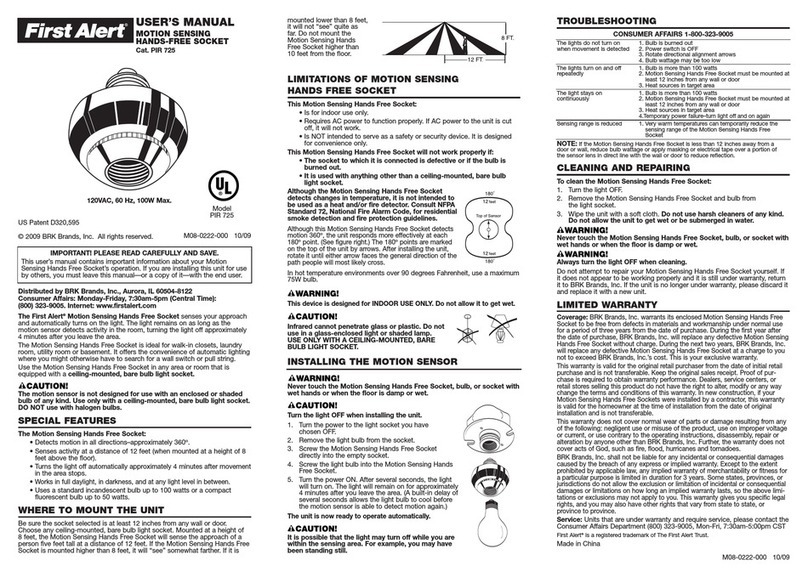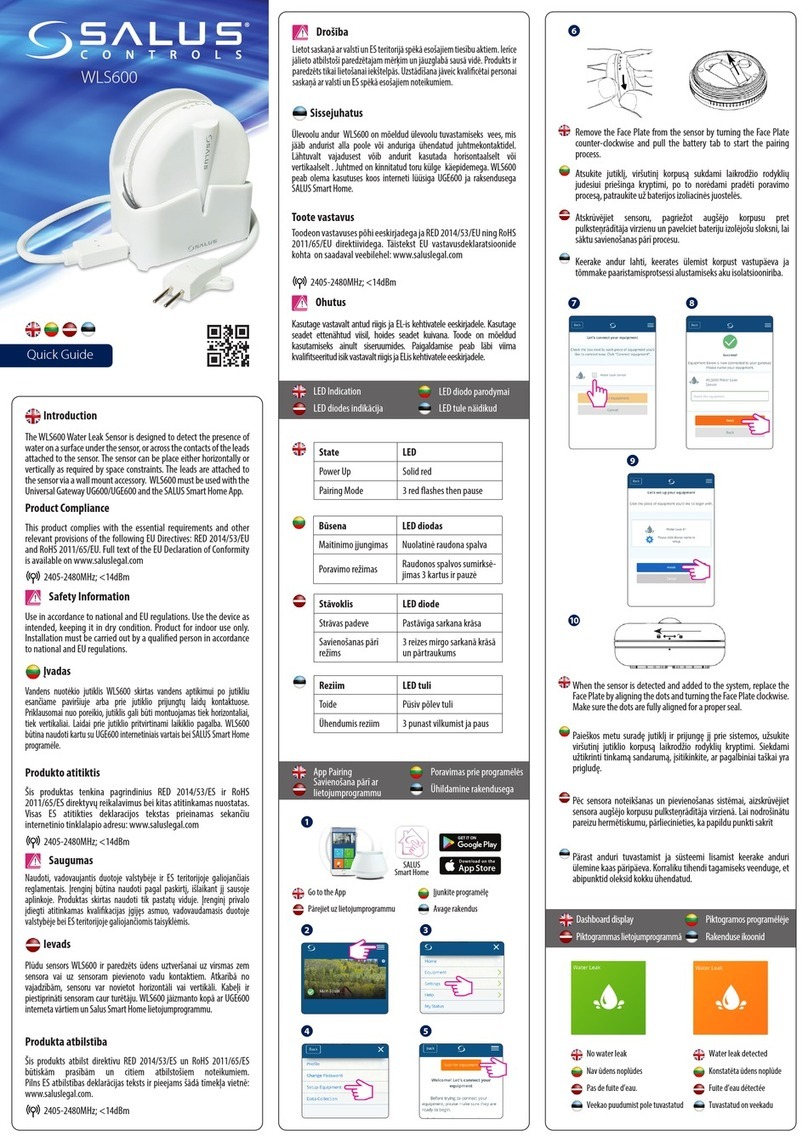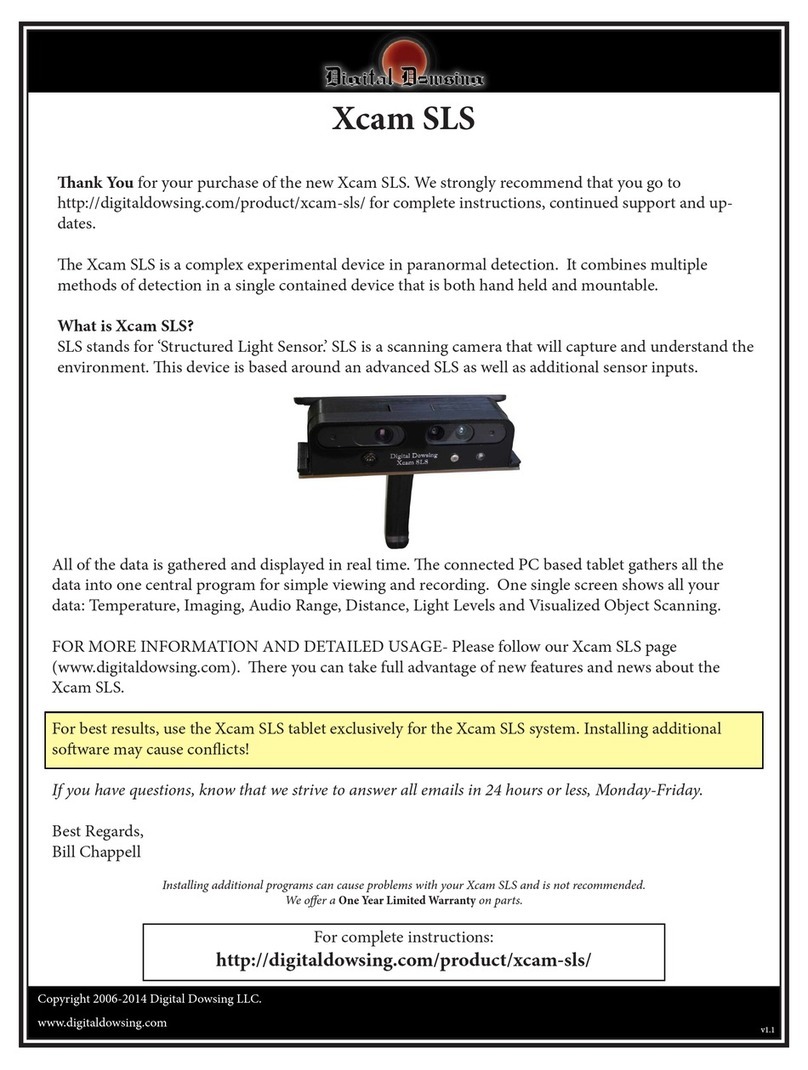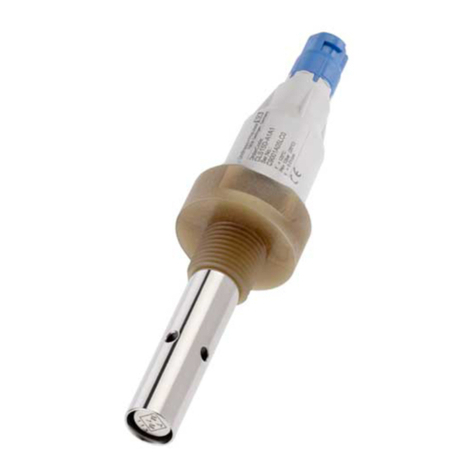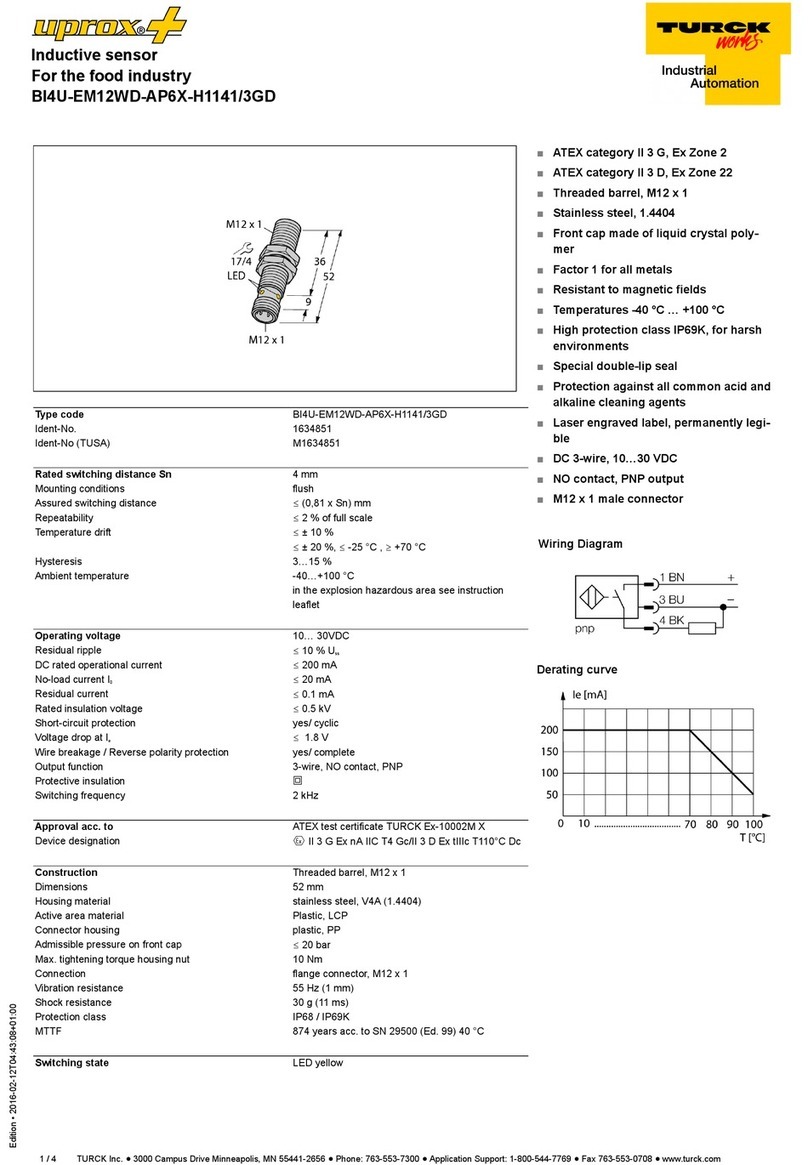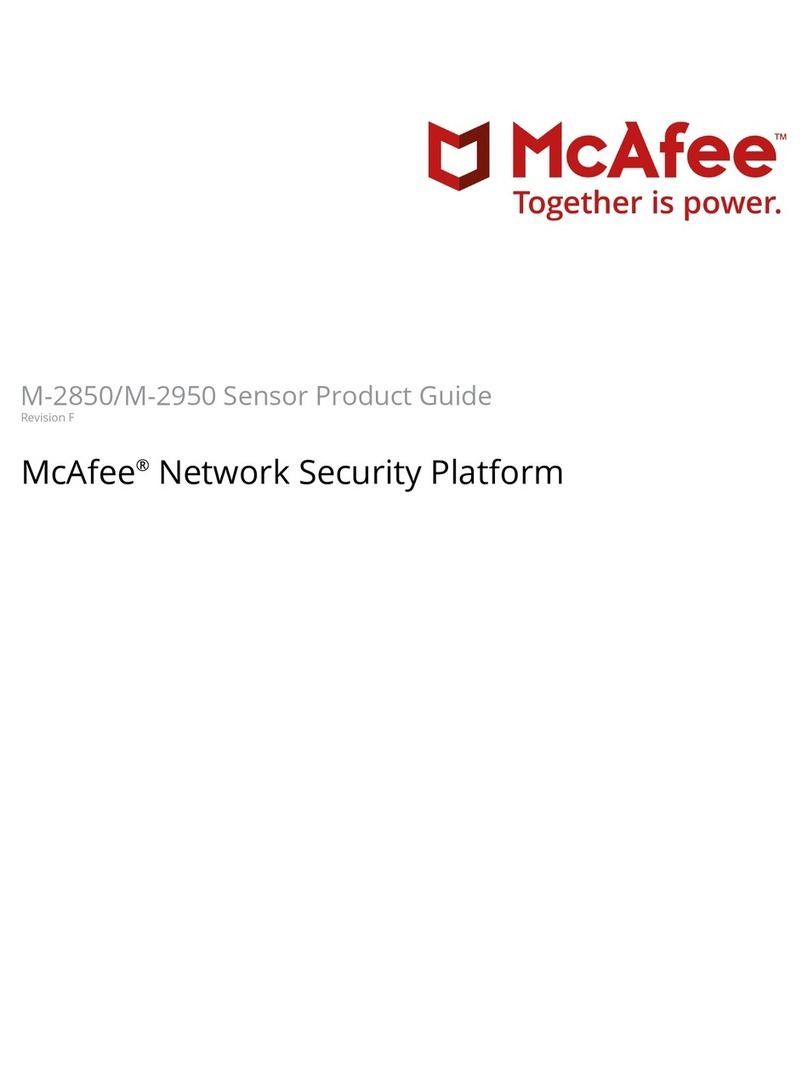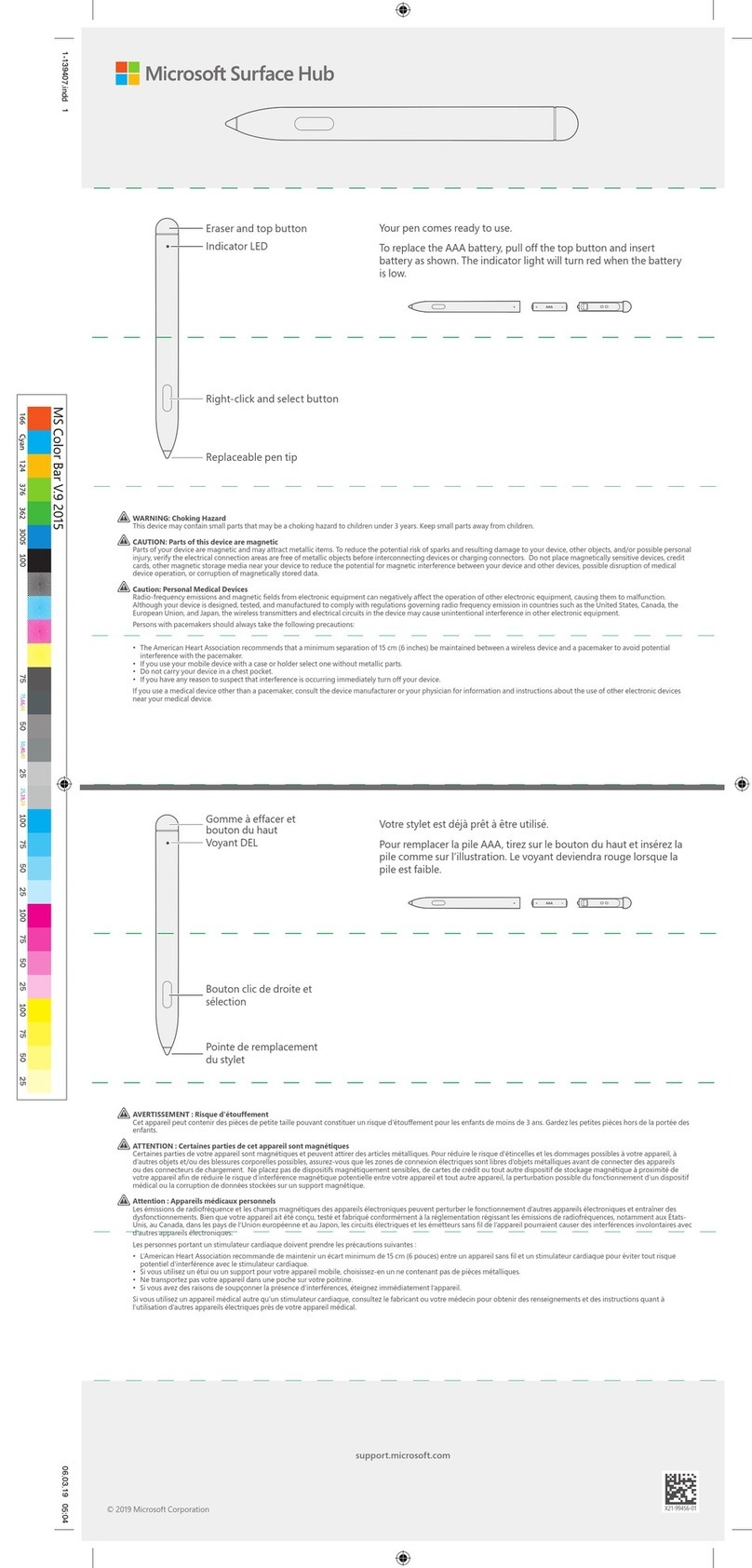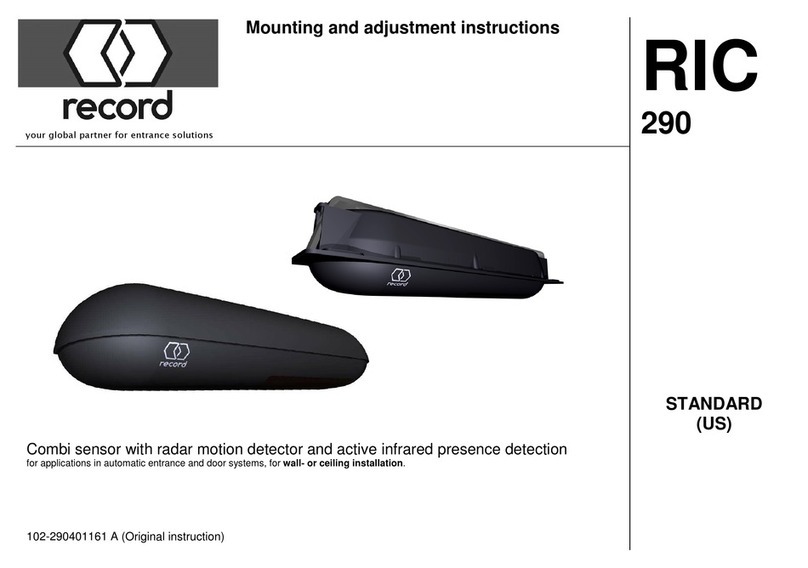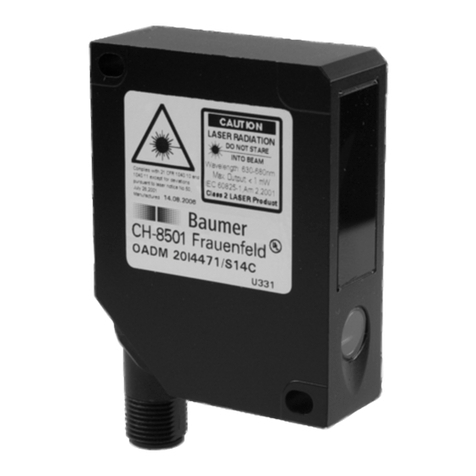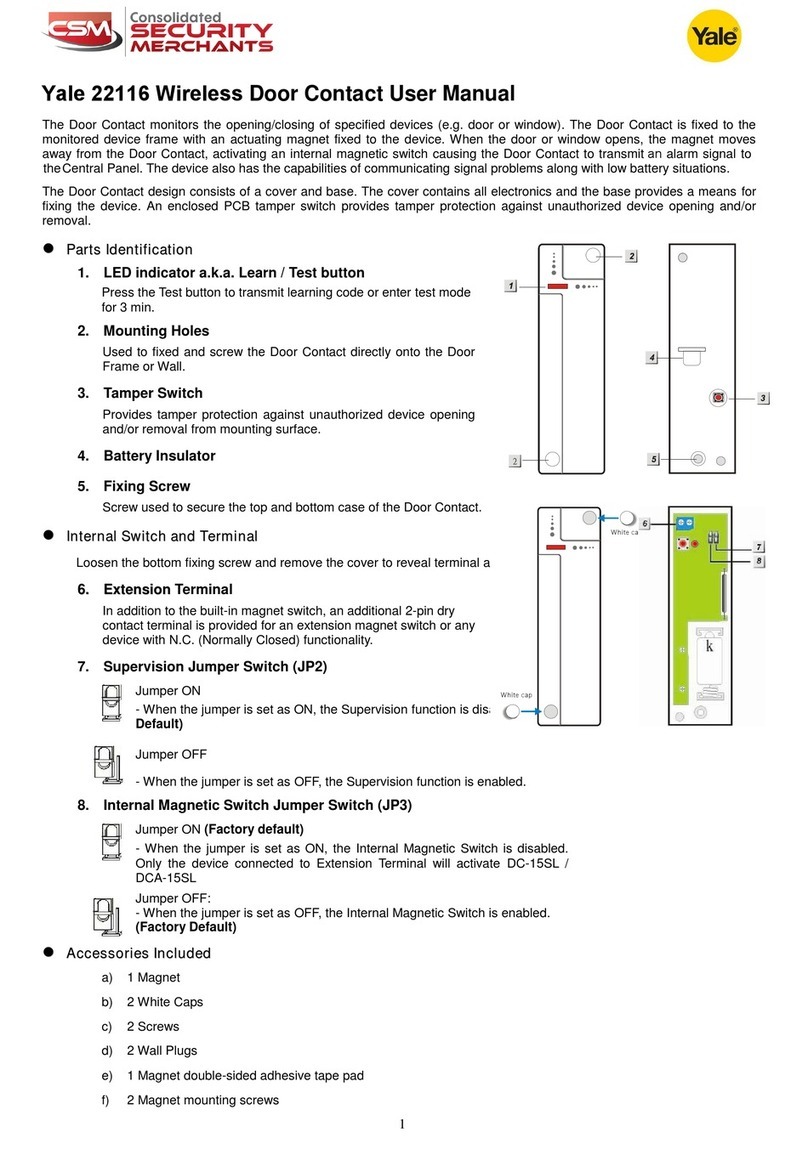senva TG Series User manual

INSTALLATION INSTRUCTIONS
senvainc.com 1-866-660-8864 1825 NW 167th Place Beaverton Oregon 97006
TG SERIES
Toxic Gas Sensor
BACnet/Modbus/Analog
PRODUCT IDENTIFICATION
• Use installation wires rated for 75C and above.
• Only qualied trade installers should install, program,
maintain and test system incorporated therein. Installer is
responsible for compliance of all applicable codes.
• Read, understand, and follow instructions thoroughly.
• The unit and associated systems require routine test and
maintenance as prescribed in the TG Series User’s Manual
section ‘Periodic Test and Maintenance’
• Do not install in hazardous or classied locations.
• De-energize power supply prior to installation.
• Gas sensors should not be used as a substitute for proper
installation, use, or maintenance of gas emitting equipment.
• This device is designed to detect conditions that could
result in acute eects of gas exposure. It will not fully safeguard
individuals with specic medical conditions. If in doubt,
consult a medical practitioner.
• Conduit is prone to condensation if it passes from one
temperature zone to another, such as from indoors to outdoors
or from one part of a building to another. This condensation
may actually drip into the sensor if mounted below, causing
damage and/or poor readings.
In order to prevent condensation and water egress, seal
both the top and bottom of the conduit with a suitable
expanding foam product (such as PolywaterTM ZipsealTM ZIP-
50KIT1) to prevent warm air from entering cold conduit.
Alternatively, berglass insulation may be inserted in the
conduit between the cold and warm sections using a rigid wire
or other method if both ends cannot be sealed. Sealing is the
preferred method.
• Conduit air ow entering sensor may prevent sensor from
reading ambient air properly, resulting in under measurement
of gases. Plug sensor conduit in all installations with a foam
plug or seal as noted above in order to prevent airow from
the conduit.
DANGER
WARNING
!
LIMITATION OF LIABILITY
Senva’s liability, whether in contract, in tort, under any
warranty, in negligence or otherwise shall not exceed the
amount of the purchase price paid by the purchaser for the
product. Under no circumstances shall Senva be liable for
special or consequential damages.
TG -
Gas1
Pkg Gas2
Out
Package
R = Recessed Mount
Output Type
A = Analog
B = BACnet/Modbus
Gas Type 1*
C = Carbon Monoxide (CO)
N = Nitrogen Dioxide (NO)
D = Carbon Dioxide (CO2)
E = Dual Channel CO2
M = Methane (CH4)
P = Propane (C3H8)
H = Hydrogen (H2)
O = Oxygen (O2)
S = Hydrogen Sulphide (H2S)
A = Ammonia (NH3)
2 = R22
3 = R134A (Multi-Refrigerant)
4 = R410A
5 = R404A
6 = R407C
Gas Type 2*
X = No second gas
N = Nitrogen Dioxide (NO)
D = Carbon Dioxide (CO2)
E = Dual Channel CO2
M = Methane (CH4)
P = Propane (C3H8)
H = Hydrogen (H2)
O = Oxygen (O2)
S = Hydrogen Sulphide (H2S)
A = Ammonia (NH3)
2-6 = Refrigerants (see above)
*Refrigerant sensors may not be paired with CH4, C3H8, or H2

FEATURES
The Senva TG Series sensor is a dual-sensor toxic gas detector.
There are two versions to select from; the Analog version and
the Communications version(BACnet MS/TP and Modbus
RTU). Each version has Trouble and Alarm relays for controls/
indication. The Analog version has two congurable 0-5V/10V
or 4-20mA analog outputs that represent gas concentrations.
The communications version has a physical RS-485 connection
for communications over either BACnet MS/TP or Modbus RTU.
These sensors can be mounted in an indoor application. In
addition, each sensor has the following features:
Visual/Audible Indicators - LED indicator, audible alarm.
Supports BACnet and Modbus(BACnet/Modbus Version) - TG
units with output type of BACnet/Modbus supports BACnet MS/
TP and Modbus RTU.
Dual Gas Monitoring - Sensor can accommodate CO, NO,
CO, Methane, Propane, Hydrogen, Oxygen, HS, Ammonia,
Refrigerants or any dual combination in one enclosure. Sensor
can be expanded in eld by adding additional elements.
MOUNTING
IF MOUNTING INTO A JUNCTION BOX:
1. Remove drywall clamps by turning screw counter clockwise.
IF MOUNTING INTO DRYWALL:
1. Turn both mounting clamps all the way counter clockwise.
2. Insert into drywall cutout.
3. Turn screw clockwise to tighten drywall mounts until tight to
wall.
NFC Setup
To change device setting that are not available through the
dip switches, download the Senva Sensors app on your mobile
phone. The NFC capabilities will give you access to the internal
device settings for units that do not have screens.
*Refrigerant sensors may not be paired with CH4, C3H8, or H2

ANALOG SETUP
BACNET SETUP
WIRING CALL OUTS
PWR - Power
PWR - Power
GND - Common/Ground
GND - Common/Ground
TR - Trouble Relay
COM - Relay Common
AL - Alarm Relay
AL - Alarm Relay
PWR
GND
AL
AL
SW2
SW3
ON
ON
1 2
1 2 3 4 5 6 7 8
SW4
ON
1 2 3 4 5 6 7 8
SW1
ON
1 2
B
A
SG
GND
PWR
TR
PWR
GND
AL
AL
GND
PWR
TR
COM
S2
S1
GND
COM
SW1
ON
1 2
PWR
GND
AL
AL
GND
PWR
TR
COM
S2
S1
GND
PWR
GND
AL
AL
SW3
ON
1 2 3 4 5 6 7 8
SW4
ON
1 2 3 4 5 6 7 8
B
A
SG
GND
PWR
TR
COM
SW2
ON
1 2
1 2 3 4 5 6 7 8
PWR
GND
AL
AL
SW2
SW3
ON
ON
1 2
1 2 3 4 5 6 7 8
SW4
ON
1 2 3 4 5 6 7 8
SW1
ON
1 2
B
A
SG
GND
PWR
TR
PWR
GND
AL
AL
GND
PWR
TR
COM
S2
S1
GND
COM
SW1
ON
1 2
PWR
GND
AL
AL
GND
PWR
TR
COM
S2
S1
GND
PWR
GND
AL
AL
SW3
ON
1 2 3 4 5 6 7 8
SW4
ON
1 2 3 4 5 6 7 8
B
A
SG
GND
PWR
TR
COM
SW2
ON
1 2
1 2 3 4 5 6 7 8
S2 - Sensor 2 analog
output
S1 - Sensor 1 analog
output
GND - Common/Ground
PWR - Power
PWR - Power
GND - Common/Ground
GND - Common/Ground
TR - Trouble Relay
COM - Relay Common
AL - Alarm Relay
AL - Alarm Relay
B - -RS485(B(-))
SG - Isolated Shield
Ground
A - +RS485(A(+))
DIP
1
2
OFF
LOW
LOW
ON
HIGH
HIGH
Function
S1 Alarm
S2 Alarm
Comms DIP Settings
Analog DIP Settings
OFF
N/A
Modbus
0
0
0
Modbus
N/A
DIP
1
2
3
4
5
6
7
8
Function
BAUD0
BAUD1
BAUD2
D/P/S0
D/P/S1
NO USE
Protocol
EOL
ON
120 OHM
BACnet
1
1
1
BACnet
120 OHM
Function
MAC Address/
Modbus Address
0-127 (binary)
Baud Rate
0(000)=9600
1(001)=19200
2(010)=38400
3(011)=57600
4(100)=76800
5(101)=115200
Data/Parity/Stp
0(00)=8N1
1(01)=8N2
2(10)=8O1
3(11)=8E1
1 2
DIP
1
2
OFF
Current
0-5V
ON
Voltage
0-10V
1 2
OFF
0
0
0
0
0
0
0
DIP
1
2
3
4
5
6
7
8
Function
MAC0
MAC1
MAC2
MAC3
MAC4
MAC5
MAC6
NO USE
ON
1
1
1
1
1
1
1
SW4
SW3
DIP
SW3
1-7
SW4
1-3
SW4
4-5
SW2
ON
1 2
SW1
ON
1 2
SW3
ON
1 2 3 4 5 6 7 8
SW4
ON
1 2 3 4 5 6 7 8
SW2
SW1
DIP
1
2
OFF
LOW
LOW
ON
HIGH
HIGH
Function
S1 Alarm
S2 Alarm
Comms DIP Settings
Analog DIP Settings
OFF
N/A
Modbus
0
0
0
Modbus
N/A
DIP
1
2
3
4
5
6
7
8
Function
BAUD0
BAUD1
BAUD2
D/P/S0
D/P/S1
NO USE
Protocol
EOL
ON
120 OHM
BACnet
1
1
1
BACnet
120 OHM
Function
MAC Address/
Modbus Address
0-127 (binary)
Baud Rate
0(000)=9600
1(001)=19200
2(010)=38400
3(011)=57600
4(100)=76800
5(101)=115200
Data/Parity/Stp
0(00)=8N1
1(01)=8N2
2(10)=8O1
3(11)=8E1
1 2
DIP
1
2
OFF
Current
0-5V
ON
Voltage
0-10V
1 2
OFF
0
0
0
0
0
0
0
DIP
1
2
3
4
5
6
7
8
Function
MAC0
MAC1
MAC2
MAC3
MAC4
MAC5
MAC6
NO USE
ON
1
1
1
1
1
1
1
SW4
SW3
DIP
SW3
1-7
SW4
1-3
SW4
4-5
SW2
ON
1 2
SW1
ON
1 2
SW3
ON
1 2 3 4 5 6 7 8
SW4
ON
1 2 3 4 5 6 7 8
SW2
SW1
PWR
GND
AL
AL
SW2
SW3
ON
ON
1 2
1 2 3 4 5 6 7 8
SW4
ON
1 2 3 4 5 6 7 8
SW1
ON
1 2
B
A
SG
GND
PWR
TR
PWR
GND
AL
AL
GND
PWR
TR
COM
S2
S1
GND
COM
SW1
ON
1 2
PWR
GND
AL
AL
GND
PWR
TR
COM
S2
S1
GND
PWR
GND
AL
AL
SW3
ON
1 2 3 4 5 6 7 8
SW4
ON
1 2 3 4 5 6 7 8
B
A
SG
GND
PWR
TR
COM
SW2
ON
1 2
1 2 3 4 5 6 7 8
PWR
GND
AL
AL
SW2
SW3
ON
ON
1 2
1 2 3 4 5 6 7 8
SW4
ON
1 2 3 4 5 6 7 8
SW1
ON
1 2
B
A
SG
GND
PWR
TR
PWR
GND
AL
AL
GND
PWR
TR
COM
S2
S1
GND
COM
SW1
ON
1 2
PWR
GND
AL
AL
GND
PWR
TR
COM
S2
S1
GND
PWR
GND
AL
AL
SW3
ON
1 2 3 4 5 6 7 8
SW4
ON
1 2 3 4 5 6 7 8
B
A
SG
GND
PWR
TR
COM
SW2
ON
1 2
1 2 3 4 5 6 7 8

PERIODIC TEST AND MAINTENANCE
Periodic Maintenance
Though the frequency of inspection is typically aected by the
operating conditions and environment (extreme temperatures,
extreme humidity, exposure to contaminants, etc.), Senva
recommends the following maintenance and intervals. More
frequent maintenance may be required per local code by the
Jurisdiction Having Authority (JHA). An accurate log of all
maintenance and abnormal occurrences should be maintained
for the proper service of this product
Every 6 Months
• For Methane, Propane, Hydrogen, H2S, Ammonia NH3
or refrigerants retest and recalibrate the unit using NIST
traceable reference gas to ensure sensors remain accurate.
• Visually inspect to ensure optimal operating conditions (no
broken pieces/components, sensor lter not blocked or
discolored, visual indicators operational, etc.).
• Clean the exterior with a soft cloth to remove debris from
the sensor intake ports.
Annual
• For Oxygen, CO or NO2, retest and recalibrate the unit
using NIST traceable reference gas to ensure sensors
remain accurate.
• For sensor replacement be sure to power down the sensor
and remove element to be replaced and plug in new
element in its place and then re-apply power.
Do Not
• Expose the sensor and its elements to solvents.
• Immerse the sensor into liquids.
DEVICE OVERVIEW
2
1
3
4
56
1 - LED indicator
2 - Buzzer
3 - Sensor Element 1
4 - Sensor Element 2
5 - Capacitive touch button
6 - Capacitive touch button

1. For proper detector operation, ensure that the Senva TG is connected to a continuous source of power
(not controlled by a wall switch). The TG current draw gures represent worst-case conditions and will not
vary as the applied DC voltage varies. To meet the requirements of ANSI/UL 2075, Second Edition, the TG
Carbon Monoxide detector employs duplicate power leads (Red and Black) where the rst pair of power
leads goes into the rst Carbon Monoxide detector and the second pair of power leads goes to the next
detector on the loop.
2. The alarm control panel zone inputs must be terminated with end of line resistors (E.O.L.R.), which are
provided with the panel.
3. The relay of the TG is a dry contact and rated at 1A, 24VAC/30VDC. It shall not be used to directly drive a
fan. When connecting the units to other UL approved devices, make sure that the load does not exceed the
relay’s rating.
WIRING AND INSTALLATION
OPERATION
Green Normal readings below the low level set-point
Yellow Gas concentration above the low level set-point
and below the high level set-point
Red Gas concentration level above the high level set-
point
Alarm Set-points
The alarm set-points are applicable for elements populated on
the board by the factory, or added in the eld by the user.
Sensor LOW level (Default) HIGH level (Default)
CO 35 ppm 100 ppm
NO2 1 ppm 3 ppm
CO2 800 ppm 5000 ppm
Methane/
Propane/
Hydrogen
10% L.E.L. 25% L.E.L.
Oxygen Less than 19.5% Vol Greater than 23% Vol
H2S 25 ppm 75 ppm
Ammonia 20 ppm 40 ppm
Refrigerants 300 ppm 600 ppm
CO for Fire Alarm System
The sensors shall respond with the following Carbon Monoxide
concentration and time limits.
Single and multiple-station CO alarms (UL Product code: CZHF)
Concentration of CO Maximum Alarm time response
100-5 ppm 90 minutes (not less than 16 minutes)
200-10 ppm 35 minutes (not less than 8 minutes)
400-20 ppm 15 minutes (not less than 4 minutes)
Trouble Signal
During a device failure mode the N.C. Trouble relay will open
and the Device LED indicator will then turn yellow and blink to
indicate one of the following events:
• Removal of a sensor
• Sensor is at end of life
• The pulse check function has detected a sensor failure
• The device has lost power
The following section details factory defaults for LED function,
Trouble and alarm set-points, Trouble relay and alarm status
functions, and the sensor element lifetime clock. These values
can be modied from their default settings via the TG Series
User’s Guide.
LED Function
The LED indicators function in sync with the Trouble relay and
alarm status thresholds. LED will change state if either of the
gases reach their Trouble or alarm set-point.

WIRING EXAMPLES
Gas Sensor 1
V+
V- (Gnd) A(+)
Agnd
B(-)
TR
COM
AL
AL
Gas Sensor 2
Building Automation Control Panel
Comms (BACnet or Modbus)
A(+)
B(-)
Note:
Colors are shown to
clarify node connections;
wire color shall be
determined by national
and local electrical codes.
V+
V- (Gnd)
V+
V- (Gnd)
TR
COM
AL
AL
V+
V- (Gnd)
A(+)
Agnd
B(-)
N.O. initiating
circuit
E.O.L.R.
Power Supply
15-30VDC/24VAC
50/60Hz, 4w max, 160mA max.
GND
Gas Sensor 1
V+
V- (Gnd) GND
S1
S2
TR
COM
AL
AL
Gas Sensor 2
Building Automation Control Panel
Analog (0-5/10V, 3 wire 4-20mA)
IN1
IN2
Note:
Colors are shown to
clarify node connections;
wire color shall be
determined by national
and local electrical codes.
V+
V- (Gnd)
V+
V- (Gnd)
TR
COM
AL
AL
V+
V- (Gnd)
N.O. initiating
circuit
E.O.L.R.
COMMON
GND
S1
S2
Power Supply
15-30VDC/24VAC
50/60Hz, 4w max, 160mA max.
GND

SPECIFICATIONS
Power supply Power 15-30VDC/24VAC (1), 50/60Hz, 4w max, 160mA max.
Wiring Conductor 14-24 AWG, Minimum 600V, 75°C
Terminal Torque 0.5 N•m
Outputs (Analog)
2 Programmable Outputs 0-10V (default), 0-5V, 4-20mA (selectable)
CO Output Scaling 0-200ppm (default), 0-500ppm (menu selectable)
NO Output Scaling 0-10ppm (default), 0-10ppm (menu selectable)
CO2 Output Scaling 0-10,000 ppm (default), 0-10,000 ppm (menu selectable)
Propane/Methane/Hydrogen Output Scaling 0-50% LEL (default), 0-50% LEL (menu selectable)
Oxygen Output Scaling 0-25% Vol (default), 0-25% Vol (menu selectable)
Refrigerant Output Scaling 0-1000 ppm (default), 0-1000 ppm (menu selectable)
H2S Output Scaling 0-100 ppm (default), 0-100 ppm (menu selectable)
Ammonia NH3 Output Scaling 0-100 ppm (default), 0-100 ppm (menu selectable)
Temp Output Scaling (optional) -20 to 85ºC
Output (BACnet/Modbus)
RS-485 BACnet MS/TP, Modbus RTU, Modbus ASCII
Baud Rates 9600, 19200, 38400, 57600, 76800, 115200
RS-485 Loading 1/4 unit
Trouble Relay Trouble relay characteristics N.C. 1A@24VAC/30VDC(50/60Hz)(No Mains Connection)
Alarm Relay Alarm relay characteristics N.O. 1A@24VAC/30VDC(50/60Hz)(No Mains Connection)
LED’s Green, Yellow, Red Green = Normal, Yellow = Relay, Red = Alarm
Audible exposure alarm 85dB@4” Piezo transducer 30 minutes above alarm set-point per UL2034 (menu selectable)
CO Sensor Performance
Type Electrochemical
Accuracy ±5% of Default Range, ±5% of Reading Above 200ppm
Resolution 1ppm
Life expectancy 7 years
Recommended Calibration Annual
Recommended Height 3 to 6 feet; coverage 5000-7500 sq ft.
NO Sensor Performance
Type Electrochemical
Accuracy ±5% of Default Range, ±5% of Reading Above 20ppm
Resolution 0.1ppm
Life expectancy 7years
Recommended Calibration Annual
Recommended Height 3 to 6 feet; coverage 5000-7500 sq ft.
CO Sensor Performance
Type Non-dispersive Infrared (NDIR)
Accuracy
±(30ppm +3% of reading) (400-2000ppm), @-10-50°C
±(50ppm +5% of reading) Standard (2000-5000ppm), @-10-50°C
±(50ppm+3% of reading) Dual Channel (2000-5000ppm), @-10-50°C
±(100ppm+10% of reading) (5000-10000ppm), @ 0-50C
Drift with ABC disabled 35ppm/month (6) (Standard) 5ppm/month (6) (Dual Channel)
Range 0-2000/5000ppm; Programmable up to 10,000ppm
Response time 30s
Sample rate 1s
Recommended Height 3 to 6 feet; coverage 5000-7500 sq ft.
(1) One side of transformer secondary is connected to signal common. Dedicated transformer is recommended. No mains circuit connection allowed. In addition,
it is required to use an isolated power supply that is certied by a national or international standard (i.e. UL). Use of a Class 2 LPS power supply or greater is
required.
(2) Carbon Monoxide full scale is 1000 ppm.
(3) Nitrogen Dioxide full scale is 30 ppm.
(4) Accuracy of CO reading may be reduced at temperatures below 14ºF (-10C).
(5) It is not recommended to de-activate ABC (auto-calibration) except for continuously occupied spaces or greenhouses. Drift ratings may vary based on
environment.

Methane/Propane/
Hydrogen Sensor
Performance
Type Catalytic
Detection Range 0-50% LEL (Lower Explosive Limit)
Accuracy ±5% of Range
Resolution 1% LEL
Life expectancy 5years
Recommended Calibration 6 months
Recommended Height Hydrogen/Methane: 0.5 to 1 foot from ceiling; coverage 5000-7500 sq ft
Oxygen Sensor Performance
Type Electrochemical
Detection Range 0-25% Volume
Accuracy ±5% of Range
Resolution 0.1%
Life expectancy 5 years
Recommended Calibration Annual
Recommended Height 3 to 6 feet; coverage 5000-7500 sq ft.
H2S Sensor Performance
Type Electrochemical
Detection Range 0-100 ppm
Accuracy ±5% of Range
Resolution 1 ppm
Life expectancy 5 years
Recommended Calibration 6 months
Recommended Height 3 to 6 feet; coverage 5000-7500 sq ft.
Ammonia NH3 Sensor
Performance
Type Electrochemical
Detection Range 0-100 ppm
Accuracy ±5% of Range
Resolution 0.1 ppm
Life expectancy 5 years
Recommended Calibration 6 months
Recommended Height 0.5 to 1 foot from ceiling; coverage 5000-7500 sq ft.
Refrigerant Sensors
Performance
Type MOS
Detection Range 0-1000 ppm
Resolution 1 ppm
R22, R134A, R410A, R404A, R407C Calibrated for respective gas
R134A Sensitivity @300ppm test gas: 450 ppm R410A, 425 ppm R407C, 400 ppm R404A, 370
ppm R22, 300 ppm R134A
Life expectancy 10 years (typical expectation for MOS sensors)
Recommended Calibration 6 months
Recommended Height 6 inches above oor; no more than 18 inches above lowest level of equip-
ment location for leak detection; coverage 5000-7500 sq ft.
Operating Environment
Temperature, continuous -20 to 50oC
Humidity 15-90% continuous, 0-99% intermittent
Max Elevation 2000m
Enclosure
Material ABS/Polycarbonate
Rating IP20
Dimensions 5.66”h x 3.0”w x 1.69”d
Agency Compliance CE
SPECIFICATIONS (Continued)
(6) Combination CO/Methane, CO/Propane, or CO/Refrigerant sensors should be mounted according to Propane/Methane/Refrigerant
recommendations. Consult factory for other combinations. Mounting height recommendations may be adjusted according to installation.
Ensure sensor is accessible for maintenance and target gas has unobstructed access to sensor. Mount in accordance with ANSI/NFPA 70 and NEC
or CEC.
(7) R134A sensor may be used as a general purpose refrigerant detection. The sensor’s response to other refrigerants will change proportionally
as shown in the following app note: https://www.senvainc.com/catalog/documents/downloadcenter/Refrigerant%20cross%20sensitivities.pdf
(or scan QR code). Actual response may vary depending on installation. For more accurate response to a specic gas, a unit may be eld
calibrated.

DIMENSIONS
Symptom Solution
No output Check wiring. Ensure power supply meets requirements.
Sensor reading error Sensor contaminated or at end of life. Replace sensor.
Relay Function Verify set-point. Verify test gas concentration. Cover sensor to prevent drafts and dilution during test.
TROUBLESHOOTING
BACnet/Modbus Quick Reference
The following section outlines some commonly utilized
Modbus registers and BACnet objects for quick reference. For a
complete list and description of each, please see the associated
protocol guides: TG BACnet Protocol Guide or TG Modbus
Protocol Guide.
Access Legend:
R=Readable
W-Write-able
W0 = Write-able with 0 only
NV = Saved in non-volatile conguration memory
Description BACnet
Object
Modbus
Register
Access
Gas 1 Concentration AI1 6/7 R/W0
Gas 2 Concentration AI2 8/9 R/W0
Gas 1 Warning Set-point AV1 101 R/W/NV
Gas 1 Alarm Set-point AV2 102 R/W/NV
Gas 2 Warning Set-point AV4 104 R/W/NV
Gas 2 Alarm Set-point AV5 105 R/W/NV
Supported Modbus Functions:
0x03 Read Multiple Holding Registers
0x04 Read Register Input
0x06 Write Single Register
0x10 Write multiple Registers
Revised 3/15/2021 Document #152-0386-0A
Other manuals for TG Series
6
Table of contents
Other senva Accessories manuals
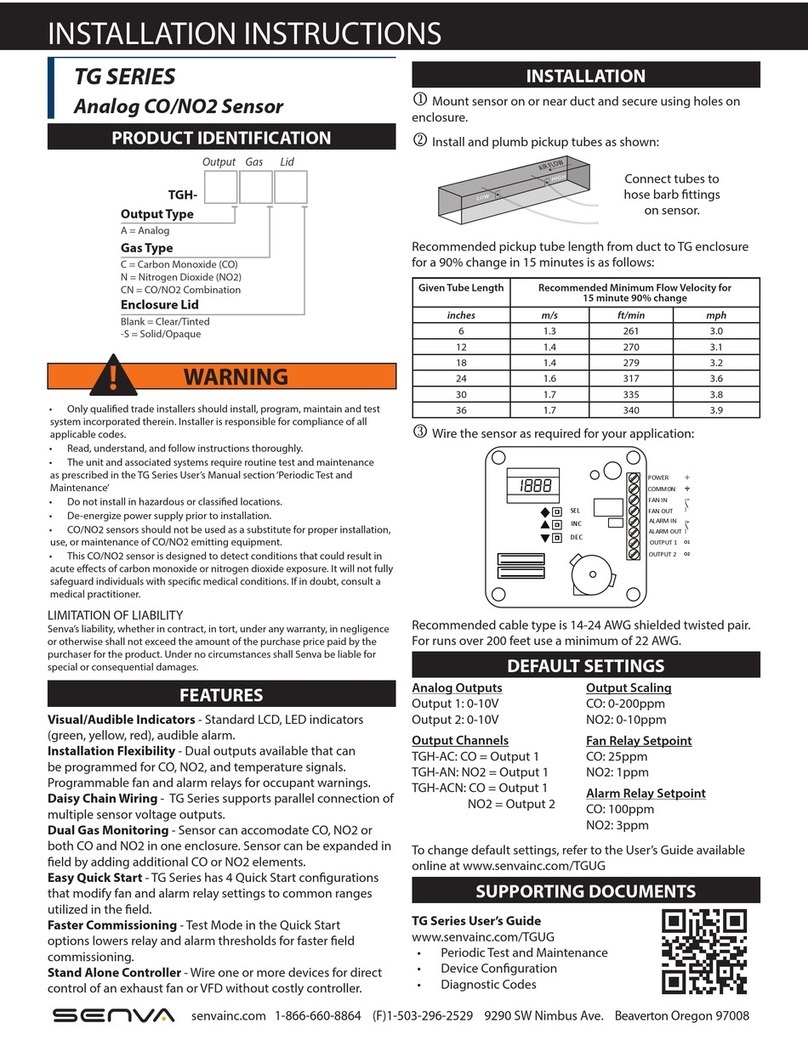
senva
senva TG Series User manual
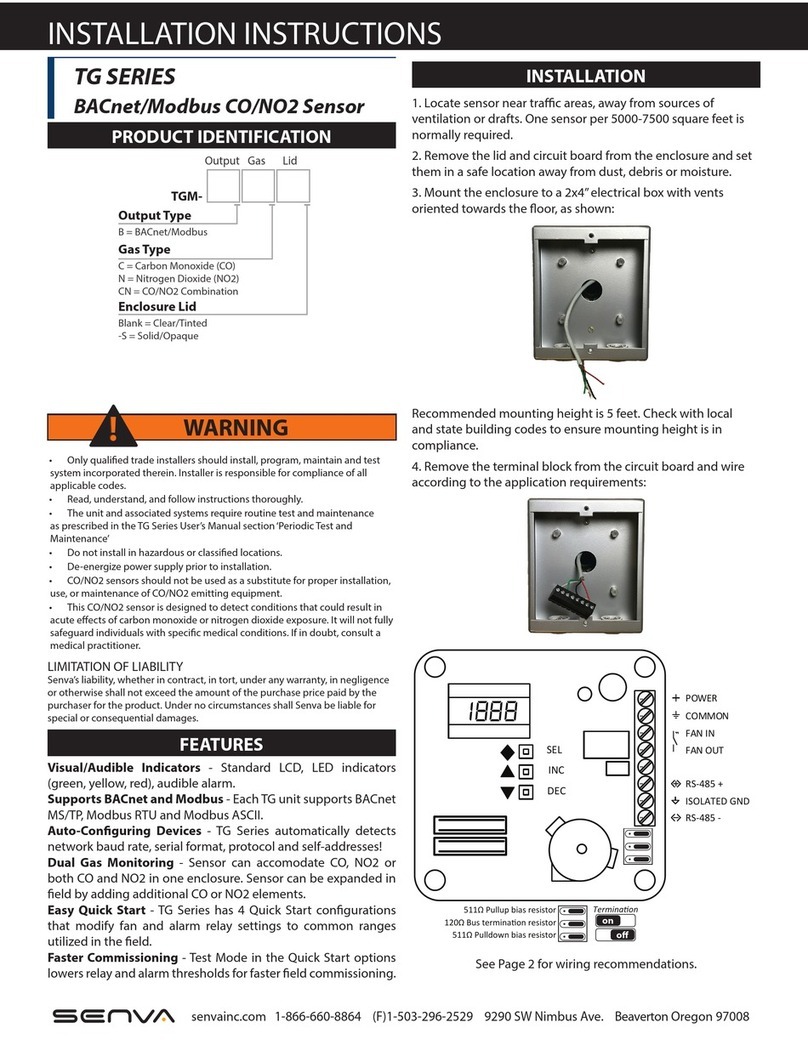
senva
senva TG Series User manual

senva
senva TG Series User manual

senva
senva TotalSense Series User manual
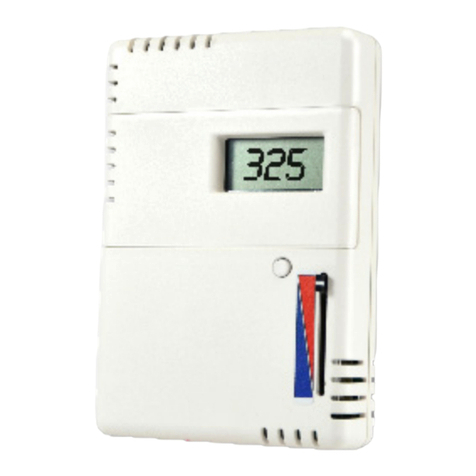
senva
senva CHTWL Series User manual
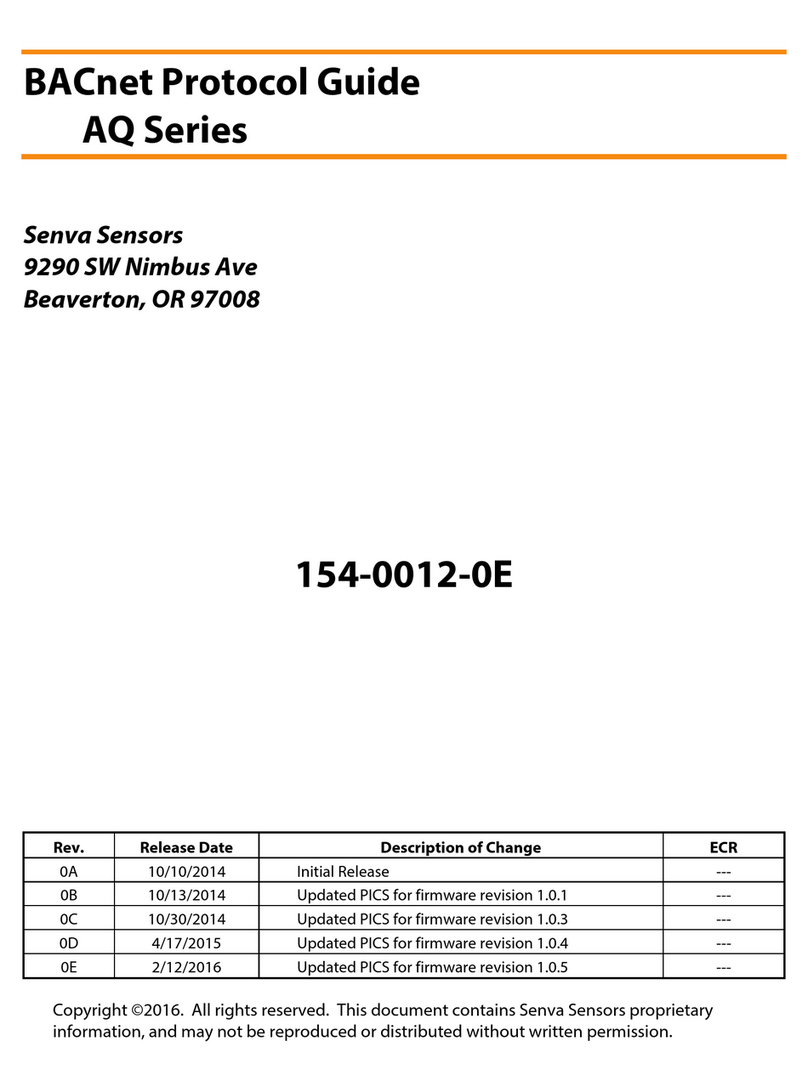
senva
senva AQ Series User manual
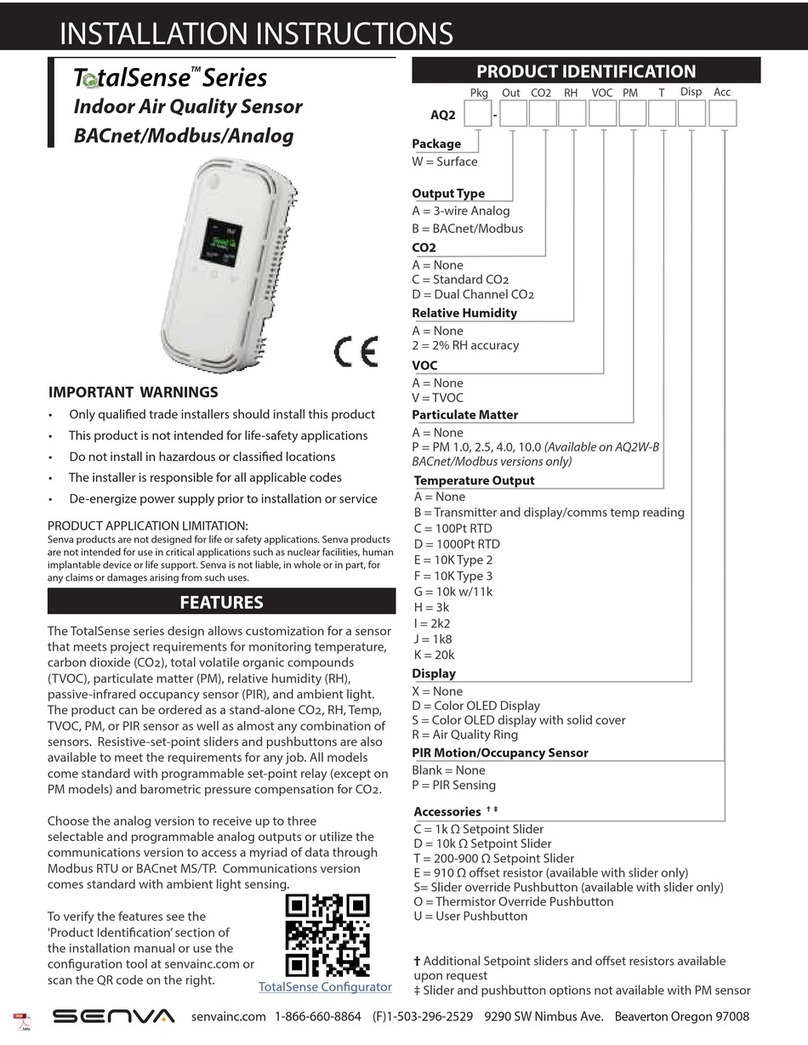
senva
senva TotalSense Series User manual

senva
senva TotalSense Series User manual

senva
senva TG Series User manual

senva
senva TG Series Installation and operating instructions



